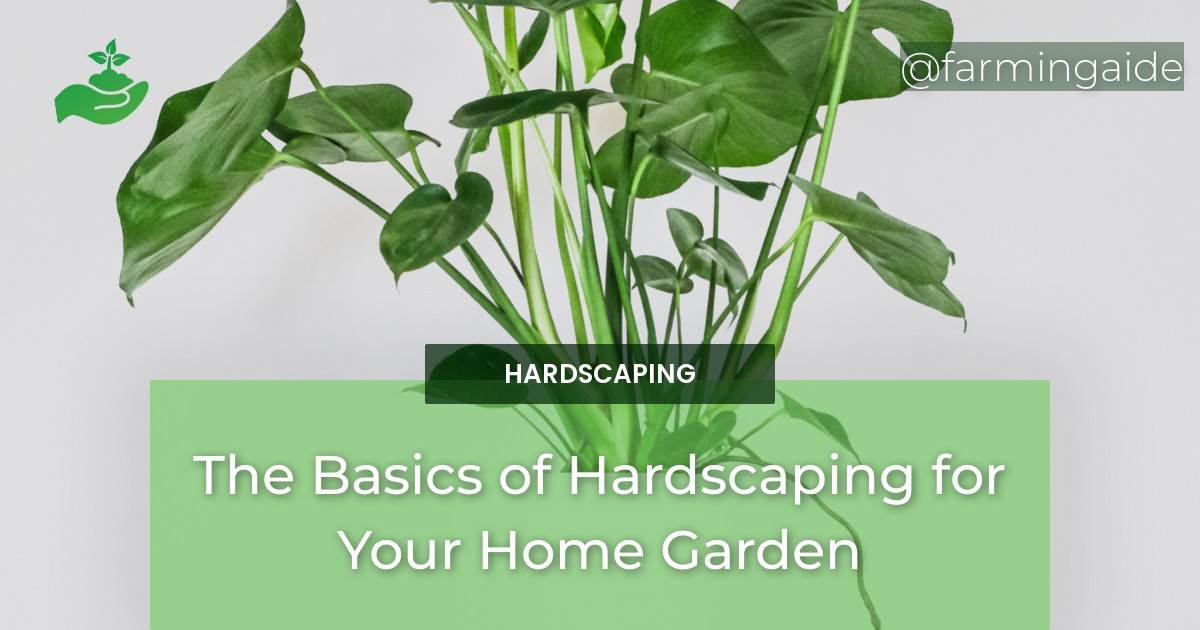Welcome to the world of home gardening! As an urban farming and horticulture expert, I understand the importance of creating a beautiful and functional outdoor space. One key element of achieving this is through hardscaping. Hardscaping refers to the non-living elements in a garden, such as pathways, walls, and patios. It is an essential aspect of garden design and can greatly enhance the overall look and feel of your outdoor space. In this article, we will delve into the basics of hardscaping for your home garden, covering everything from design and planning to maintenance and care. So, let’s get started and transform your garden into a stunning oasis with the help of hardscaping.
Design and Planning
When it comes to hardscaping for home gardens, proper design and planning are crucial. Before you start any hardscaping project, it is essential to have a clear vision of what you want to achieve. This includes considering the overall style and theme of your garden, as well as the functionality of the hardscape elements. Here are some key points to keep in mind during the design and planning stage:- Assess the space: Take a good look at your garden and identify areas that could benefit from hardscaping. This could be a bare patch of land, a sloping area, or a corner that needs some sprucing up.
- Consider the purpose: Think about how you want to use the hardscape elements in your garden. Do you want a seating area for entertaining guests, a pathway to guide visitors, or a retaining wall to prevent erosion?
- Choose materials wisely: Hardscaping materials come in a variety of options, from natural stone to concrete pavers. Consider the style and theme of your garden when selecting materials to ensure a cohesive look.
- Think long-term: Hardscaping is a long-term investment, so it is essential to choose durable materials that can withstand the elements and require minimal maintenance.
Installation and Construction
Once you have a solid plan in place, it’s time to start the installation and construction process. This is where you can get creative and bring your hardscaping vision to life. However, it is crucial to follow proper techniques and guidelines to ensure a successful and long-lasting hardscape. Here are some key points to keep in mind during installation and construction:- Prepare the area: Before installing any hardscape elements, make sure the area is properly prepared. This includes clearing the space, leveling the ground, and ensuring proper drainage.
- Use proper techniques: Whether you are building a wall, laying a pathway, or installing a patio, it is crucial to follow proper techniques and guidelines to ensure structural integrity and longevity.
- Consider hiring professionals: Hardscaping can be a challenging and time-consuming task, so it may be worth considering hiring professionals for larger projects. They have the expertise and equipment to ensure a high-quality and efficient installation.
- Pay attention to details: The little details can make a big difference in the overall look and functionality of your hardscape. Pay attention to things like spacing, alignment, and finishing touches to achieve a polished and professional result.
Maintenance and Care
Just like any other aspect of your garden, hardscaping requires regular maintenance and care to keep it looking its best. Neglecting maintenance can lead to damage and costly repairs in the future. Here are some key points to keep in mind for hardscape maintenance and care:- Regular cleaning: Sweep or hose down your hardscape elements regularly to remove dirt, debris, and stains. This will help prevent buildup and keep your hardscape looking fresh.
- Inspect for damage: Regularly inspect your hardscape for any cracks, chips, or other damage. Addressing these issues early on can prevent them from becoming bigger problems in the future.
- Seal and protect: Depending on the materials used, it may be necessary to seal your hardscape to protect it from the elements. This is especially important for porous materials like natural stone.
- Be mindful of plantings: When designing your hardscape, consider the placement of plants and their growth patterns. Avoid planting too close to hardscape elements to prevent damage from roots or overgrowth.
What are the Key Basics I Need to Know for Hardscaping in My Home Garden?
When it comes to hardscaping in your home garden, there are a few key basics to keep in mind. First, consider the materials you want to use, such as stone, brick, or concrete. Next, focus on the layout and design to create an inviting outdoor space. These hardscaping tips for gardens will help you enhance the beauty of your landscape.
Conclusion
Hardscaping is an essential aspect of home gardening that can greatly enhance the beauty and functionality of your outdoor space. By following proper design, installation, and maintenance techniques, you can create a stunning hardscape that will last for years to come. So, whether you are looking to add a pathway, patio, or retaining wall to your garden, keep these basics of hardscaping in mind for a successful and enjoyable project. Happy gardening!RELATED ARTICLES:


